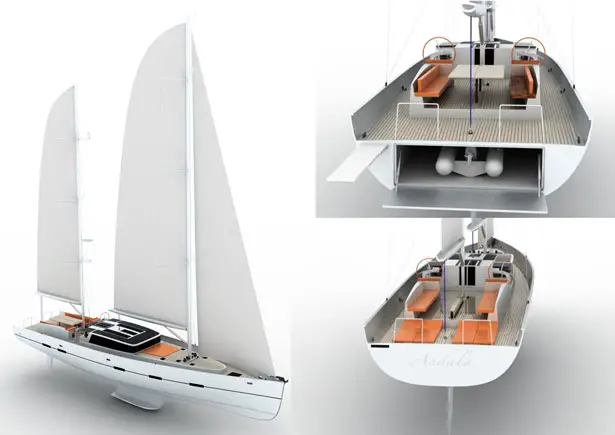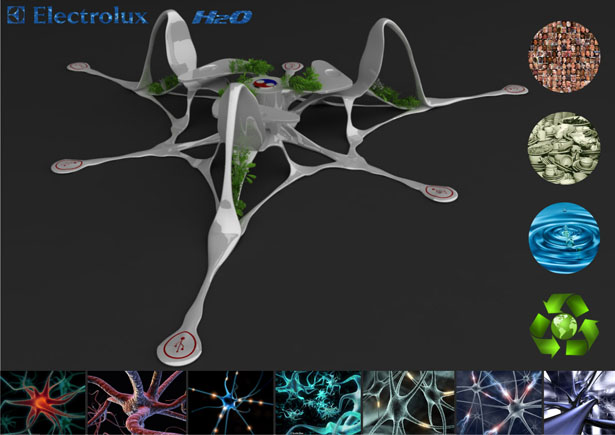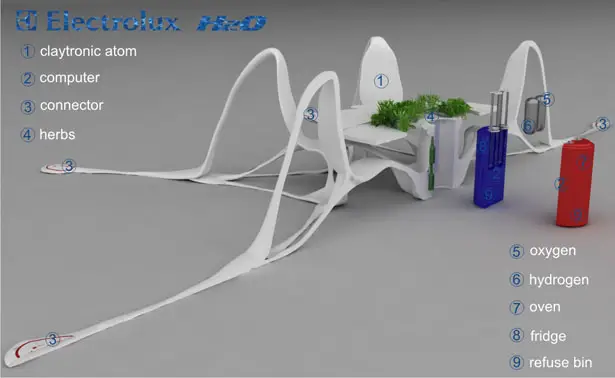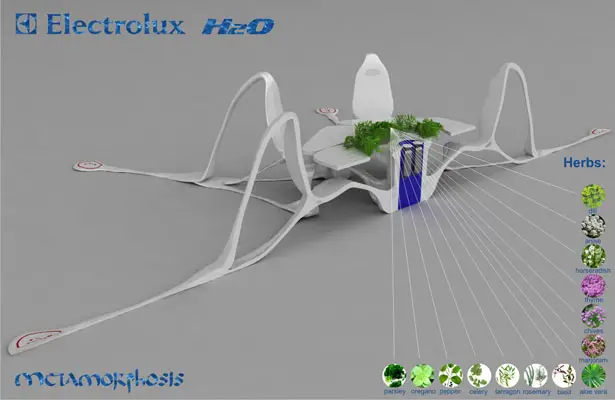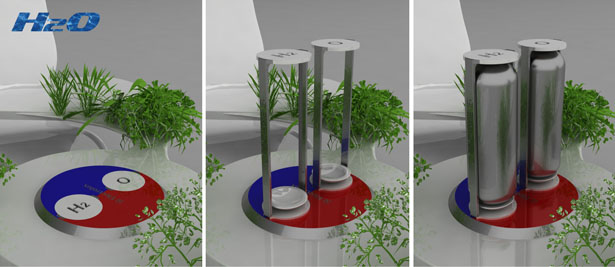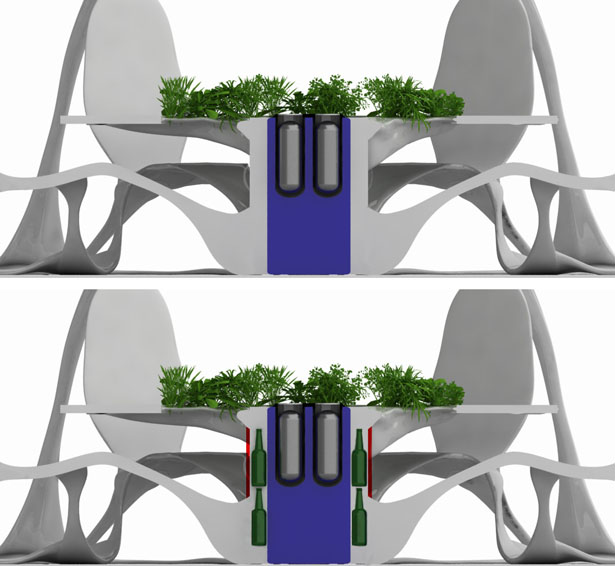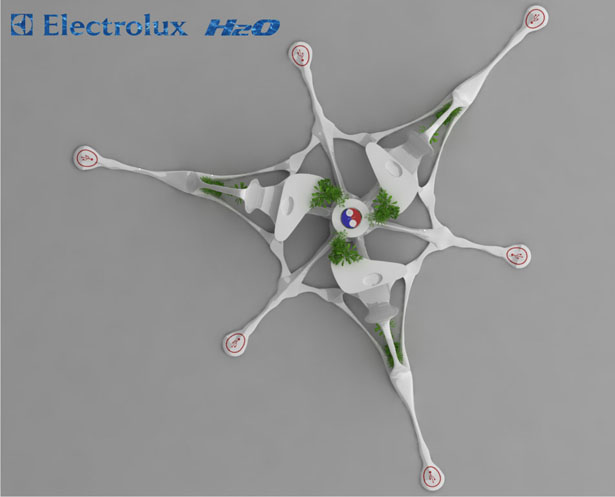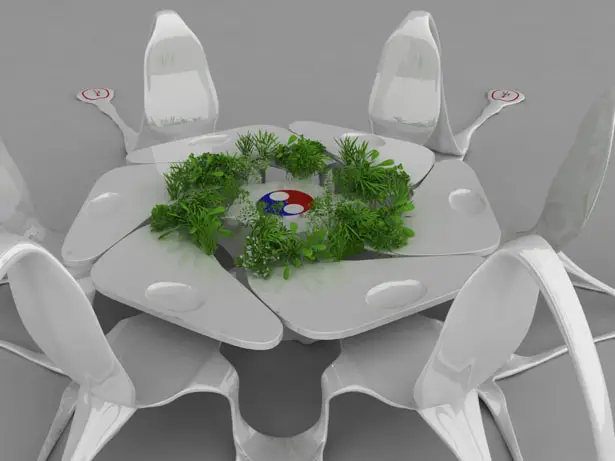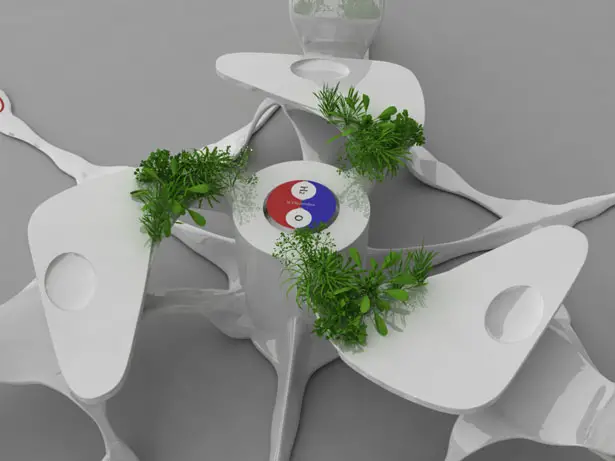Considered to be the kitchen of future, this kitchen has been designed based on the principle of metamorphosis. It turns out to be an exclusive concept, fulfilling all its necessities. The claytronic, considered as the basic substance allows the owners to shape the kitchen as per their own desires and changing moods. This futuristic kitchen will certainly make the client happy with the atmosphere it offers.
The claytronic atom comprises small silicium spheres that transmit the current to each other. Initially, the kitchen’s materials receive a pre-programmed form that can be changed by the owner at a later point of time. This paves way for the kitchen to create the final product only once and is capable of designing new models along the way. The kitchens’ undeniably practical form seems to be the most striking element. Onactivation, the product takes its desired shape. This kitchen as well features fuel cells with the necessary hydrogen coming from a water-splitting machine that makes end-product of the burning gas to be clean water. The kitchen stores all information and recipes. It is quite possible to use outer electric objects also, as the heat transferring metal acts as a good energy provider. In total, this super cool kitchen model serves as a great place for spices and medical plants to grow, thereby paving way for oxygen formation.
Built on the principle of metamorphosis, the kitchen of the future loses its exclusive part in the household and turns into its centre by fulfilling all its necessities. The basic substance, the claytronic atom, allows the owner to shape his/her kitchen according to own wishes and changing moods, which means that one single acquisition enables the usage of various models, making sure the client will always be happy with the ambiance and will not have the chance to be bored by it.
1. How is this possible?
The claytronic atom contains small (nanometer) silicium spheres. The little units transmit the information or the current to each other. First, the material of the kitchen receives a preprogrammed form which can later be changed by the owner. This way, Electrolux has to create the final productone time only and is able to design new models along the way. These can be acquired by the clients and thus bring in much more profit.
2. Pragmatism
The advantages of this kitchen start with its undeniably practical form. The acquired product is a box which can be easily commuted and takes its desired shape only after having been activated. Use can be made of its facilities anywhere, at home, in the garden or in any open space, as it is able to provide itself with energy and does not need outer connections. The box contains the cooking and freezing equipment, which take the shape of the products they need to include. It is possible to use external electrical objects as well, as the heat transferring metal is a very good energy provider. This kitchen also contains fuel cells and the necessary hydrogen comes from a water splitting machine, which makes the end product of the burning gas to be potable, clean water. Moreover, dish washing and cleaning up becomes vile as the substance itself swallows the leftovers and takes them to the garbage can.
The kitchen stores all the information and recipes. It can become the central energy supplier, whereas the brain of the flat, a strong and fast computer, will serve all the other facilities. It is not necessary to lug a big machine, a basic netbook is enough, and when you connect the home one (Remote Desktop Connection), you can take advantage of it’s full capacity.
Last but not least, a small part of the kitchen will serve as a place where spices and medical plants would grow and thus help the oxygen formation.
